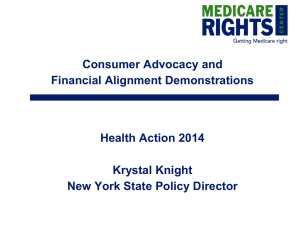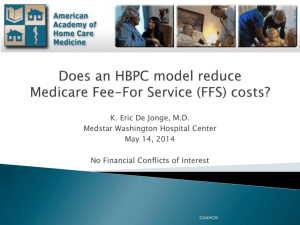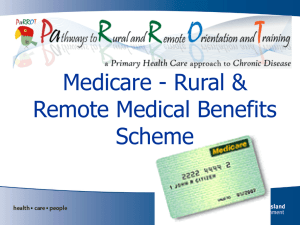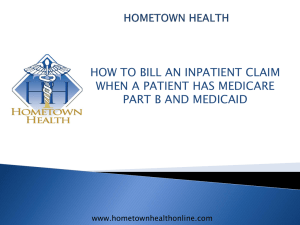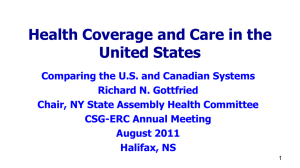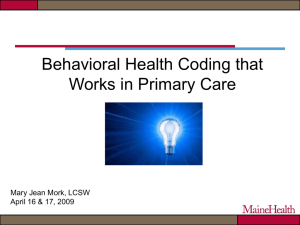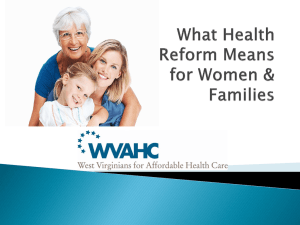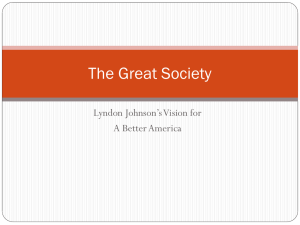Tom Cornwell presentation.
advertisement
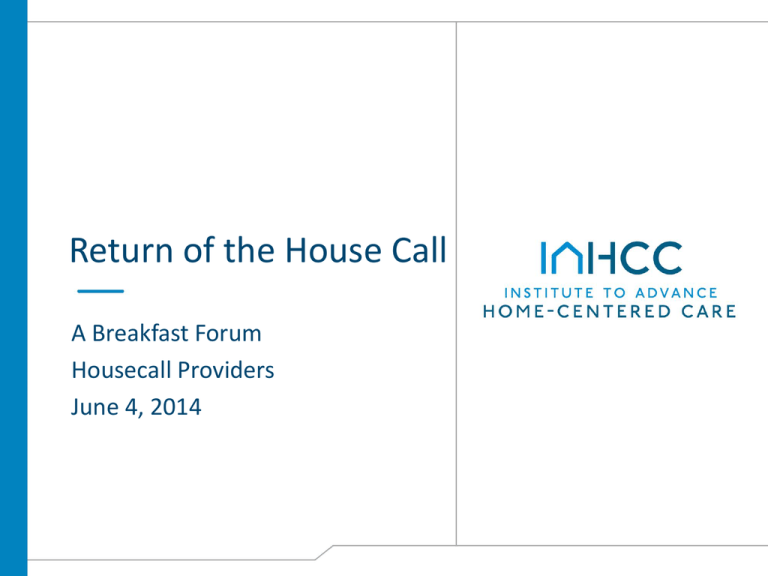
Return of the House Call A Breakfast Forum Housecall Providers June 4, 2014 The Mission of House Calls 1. 2. 3. Improve the quality of life of homebound patients Improve the quality of life of caregivers Decrease health care costs by enabling patients to remain at home and avoid expensive emergency departments, hospitals and nursing homes Three Reasons for the Decline of the House Call 1. 2. 3. Increased office/hospital based technology Fear of increased liability Financial disincentives Technology is Not a Barrier Liability is Not a Barrier Medicare House Call Codes/Payments 1997 New 99341 99342 99343 1997 Estab. 99351 99352 99353 1997 $62.51 $77.71 $101.62 1998 New (Min) 1997 $46.66 $59.37 $74.80 1998 Est. (Min) 99341 (20) 99342 (30) 99343 (45) 993441 (60) 993451 (75) 99347 (15) 99348 (25) 99349 (40) 993501 (60) 1998 $57.53 $77.58 $110.19 $140.50 $166.24 2014 $58.99 $85.34 $139.16 $193.94 $233.70 IDPA2 $27.95 $37.40 $54.90 $70.55 $85.55 1998 $45.43 $65.54 $94.92 $136.00 2014 $59.39 $89.64 $135.18 $189.15 IDPA2 $24.25 $31.30 $47.50 $68.85 1 Additional 1998 higher level Medicare house call codes 2 IDPA: Illinois Department of Public Aide Shaded payments are most frequently used house call codes Note: Medicare Payments vary by locality. These are for Locality 15. Place of Service Code for Home = 12 The Return of the House Call Why? • Demographics: Aging of Society • Health Care Reform: The Affordable Care Act 1. Readmission Reduction 2. Accountable Care Organizations 3. Independence at Home • Medicare and Medicaid Fiscal Crisis • Recent evidence of the value of house calls Demographics: Aging Society Exploding Homebound Population! For half of the patients readmitted within 30 days, there was no bill for a physician visit during that time. Resource Use Among Elderly Congestive Heart Failure: Patients Who Received a Transitional Care Intervention or Usual Care, Six Philadelphia Hospitals, 1997–2001 $600,000 Intervention Control $489,420 $500,000 $400,000 $358,472 $300,000 $236,144 $205,528 $218,035 $200,000 $145,581 $100,000 $0 0-3 Months 3-6 Months 6-12 months Transitional Care of Older Adults Hospitalized with Heart Failure: A Randomized, Controlled Trial (Naylor, M.D. et al. 2004. JAGS 52:675–84.) 5/14/09 – 2/18/11 (1 year, 9 months (645 days)) 44 Emergency Department Visits (avg 16 days between visits) 27 Hospitalizations—over half required ICU days (avg 25 days between stays) HCP First Visit 3/2/11 (365 Days) 1 ED visit + 1 Hospitalization (May 2011) Expected: 25 ED visits, 15 Hospitalizations Following Year: 0 ED, 0 Hospitalizations 1/1/12-12/5/12 17 Emergency Department (ED) Visits 13 Hospitalizations (69 Days) Multiple rehab stays HCP First Visit 12/5/12 1 ED Visit/1 Hospitalization 12/18/12 (4 days) 0 ED Visits/0 Hospitalizations in 2013 Passed away at home 7/22/13 on hospice End-of-Life Care HomeCare Physicians Patient Deaths 2003-2013 Number Percentage Total 2049 100% Home 1,521 74% Hospital 389 19% Nursing Home 102 5% Unknown 37 2% HomeCare Physicians and End-of-Life Care • 9/1/12-8/31/13 215 deaths – – – – – 79% died at home 71% where on hospice Average length of stay 2.1 years Median length of stay 0.56 years 25 died in first 30 days • 23 (92%) died at home • 25.1% of the $556 billion Medicare dollars goes to care in last year of life Riley, Lubitz; Health Services Research 4/2010 Average Traditional Medicare per capita Spending, 2009 $60,000 $55,763 $50,000 $40,000 $30,000 $20,000 $10,000 $9,702 $4,584 $Bottom 90% Top 10% Source: The Kaiser Foundation Average Independence at Home Demonstration 1. Focuses on the highest cost Medicare beneficiaries (10% of Medicare beneficiaries with ≥ 5 chronic conditions account for 2/3rds of Medicare spending) 1. 2. 3. 2. ≥ 2 chronic conditions Emergent hospitalization in past year + post acute care services Functional dependence (≥ 2 ADL deficiencies) and frailty Holds IAH provider organizations strictly accountable for three performance standards 1. 2. 3. Minimum savings of 5% Good outcomes commensurate with the beneficiary’s condition Patient/caregiver satisfaction Independence at Home Demonstration • Savings beyond 5% are split 80% / 20% with Medicare thereby creating an incentive for greater savings and generating revenue that can be invested in new mobile technologies that generate further savings such as decisional support, point-ofservice diagnostic testing and portable therapeutic devices. Medicare/Medicaid Crisis • Medicare facing insolvency • Medicaid increased from 8% of state spending in FY1985 to 22% in FY2004 overtaking K-12 education as the largest component of state budgets • Most rapidly increasing Medicaid cost is for long term care Costs of Care Before vs During HBPC for 2002 (per patient per year) *includes HBPC cost N=11,334 $103,048,728 Total Cost of VA Care Hospital Before During HBPC HBPC $38,228 $29,136* $18,868 $7026 $11,842 (- 63%) Nursing home $10,382 $1382 $9000 (- 87%) Outpatient $6490 $7140 $650 (+ 10%) All home care $2488 Change -$9,092 (- 24%) P < 0.0001 $13,588* $11,100 (+ 460%)


